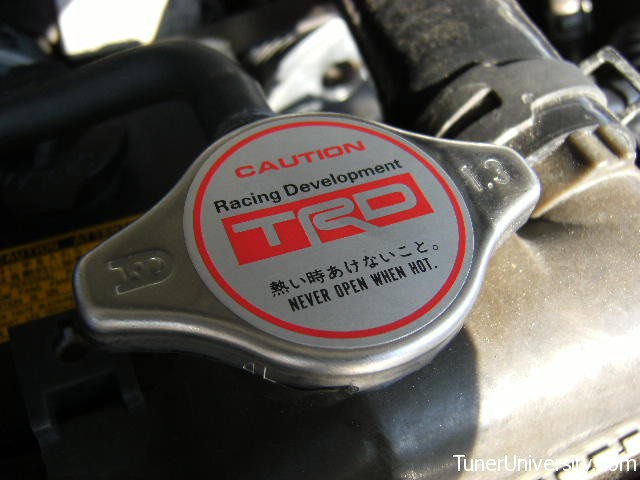It eventually over powers the primary spring in the radiator cap. Visually inspect the condition of the main seal pressure seal and return seal.

Canton Aluminum Coolant Expansion Tank Threaded Vented Cap 96 04 4 6l
How to tell if radiator cap is vented. How to tell if your radiator cap is faulty. If your coolant is leaking it could mean your radiator cap is bad. Replace the cap if the seals are cracked hardened or damaged. You have a coolant leak. If incorrect replace the cap. There are two seals.
Your engine is overheating. 1 leaking coolant if the radiator cap is stuck pressure may build inside of the radiator which could cause cooling system components to leak or burst. Of course never do this when the vehicle is still hot to avoid getting a bad burn. Air in the cooling system. Ways to check if your radiator cap is causing problems on your car. In the same way avoid opening the hood of the engine if steam is coming out as that can also cause a scalding injury.
If the cap isnt. If your temperature gauge starts reading high your radiator cap could be at. There are several warning signs that your radiator cap is not working right. The bottom seal is broken as the pressure exceeds the spring force of the cap and the cap rises. If you suspect your radiator cap is leaking you can first remove it and inspect it. One that seals at the top neck and one that seals at the bottom of the filler neck.
The cap will not allow air or coolant to expand out of the radiator untilthe design pressure is met 7 or 13 lbs depending on model at whichpoint you may have an overheating condition. Look up the pressure rating specified for the vehicle and compare it with the pressure rating printed on the cap. How a car radiator cap works. Check to see if the radiator has holes in it or if the cap looks worn or damaged. All radiator caps will vent air fluid pressure out when the pressure reaches their rated number 13 psi etc vented caps have an additional incoming vent which will allow them to draw coolant back in from the overflow tank when the radiator cools down and there is vacuum. Look at the bottom of your radiator cap.
Coolant overflow not on proper level. If you notice coolant near the radiator or the radiator cap then you clearly have leaky coolant. Noticethat the poppet at the bottom is spring loaded and thus normally closed. As the fluid heats up it expands.


















